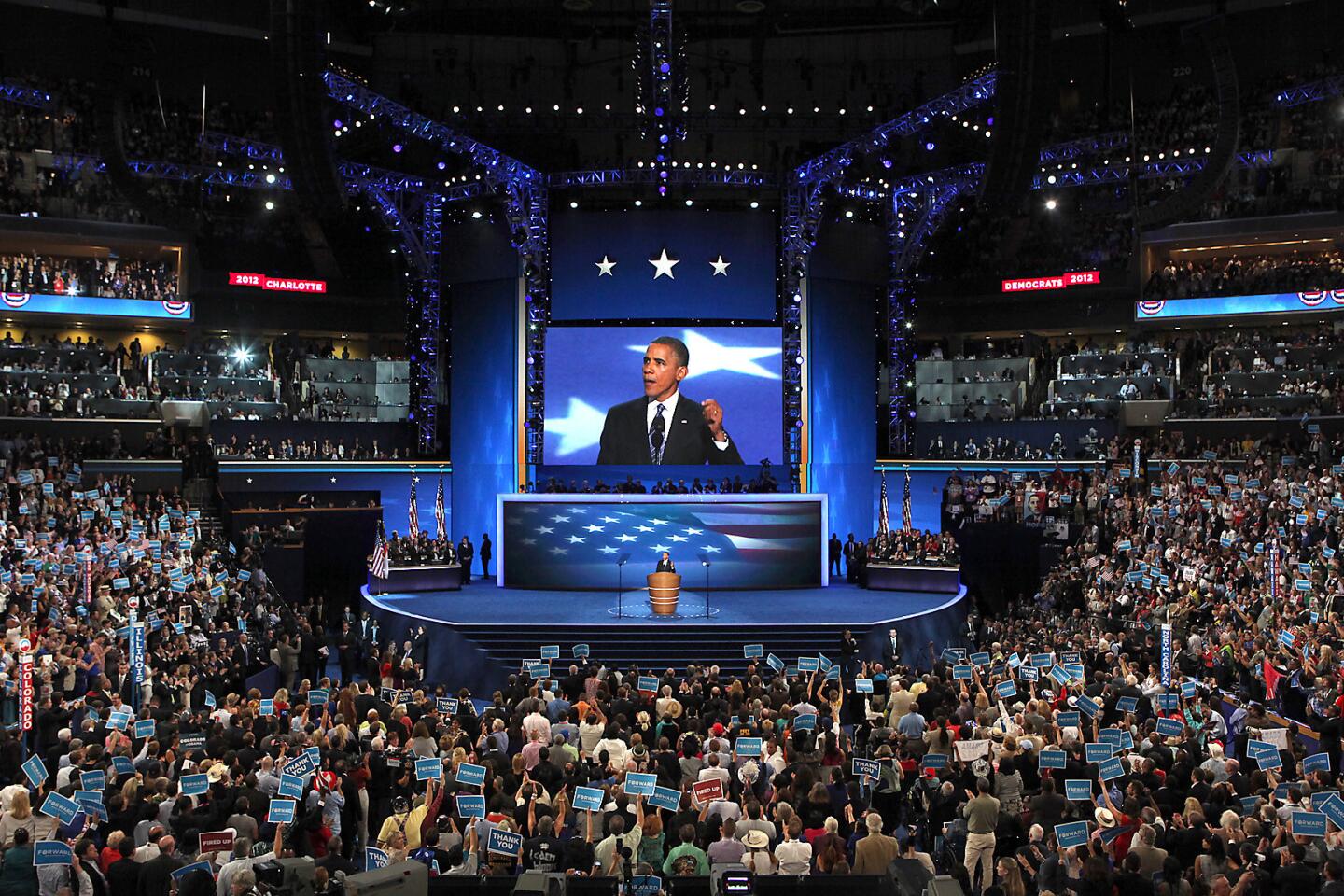Obama proposes linking federal aid to the value colleges provide
- Share via
BUFFALO, N.Y. -- President Obama began a two-day bus tour here by laying out new proposals to address what he called a “crisis” of college affordability, including a new rating system that would reward universities that provide better value for students’ tuition dollars.
Obama said the new initiatives were part of his agenda to improve the standing of America’s middle class, which he said was his “highest priority” despite the many challenges facing his administration.
The president chose move-in day at the University of Buffalo to outline his new college aid proposals, thanking more than 7,000 students at a sports arena for taking time away from “setting up your futons” to hear his message.
The most significant policy he announced would have the Department of Education establish a system to rate colleges based on the value students get for their tuition. A “College Scorecard” would be developed by 2015 using such metrics as the percentage of students receiving Pell grants, the average student debt incurred by graduates, graduation rates and average tuition.
PHOTOS: 2013’s memorable political moments
By 2018, the Department of Education would seek to use that rating system to reward colleges providing the best value, allocating larger grants to universities that see better outcomes.
Such a program would “empower students and families to make good choices,” Obama said, while ensuring that tax dollars weren’t used to subsidize enrollment at universities where students weren’t graduating at a high rate.
“Higher education is still the best ticket to upward mobility in America, and, if we don’t do something about keeping it within reach, it will create problems ... for generations to come. And that’s not acceptable,” Obama said.
Obama also engaged in a debate with Republicans in Congress who have mocked what they see as his repeated “pivots” back to economic issues. House Majority Leader Eric Cantor said Wednesday that Republicans had no need to “pivot to these kitchen-table issues because our focus never left them.”
Republicans are creating a “circus of distractions and political posturing” rather than taking steps to boost the economy, Obama said. “We’ve seen a faction of Republicans in Congress suggest that maybe America shouldn’t pay its bills, that we should shut down the government if they can’t shutdown Obamacare,” he said, referring to a drive by a handful of conservative lawmakers. “That won’t grow our economy. That won’t create jobs. That won’t help our middle class.”
The rating system itself could be implemented by the administration unilaterally, though Education Secretary Arne Duncan, briefing reporters en route from Washington on Air Force One, said the department would seek input from members of Congress.
PHOTOS: Team Obama, where are they now?
Using the new system as a basis for determining federal funding would require legislative approval, which could come as committees begin working on a new five-year higher-education authorization bill. Duncan said the issue should be “nonpolitical,” and he cited the recent approval of legislation to overhaul how student loan interest rates are determined as a model for the bipartisan approach.
The White House was mindful that the proposed rating system risked looking like other controversial, but popular, higher-education scorecards, such as the annual college rankings published by U.S. News and World Report. Those rankings are often based partially on student surveys and have drawn criticism for being subjective though hugely influential, and for sparking fierce competition among schools.
“Unlike some of the existing college-rankings systems, these are ratings, not rankings,” said James Kvaal, deputy director of the White House Domestic Policy Council. “There’s not going to be an attempt to distinguish, for example, between the 23rd and 24th best university. Instead, the idea is to give students some guidance about which colleges are creating value and which are not.”
Still, the process of devising a federal definition of “value” in education is certain to be complicated and fraught. The White House said it would consider which colleges admit low- and middle-income students, tuition, graduation rates, the debt and earnings of graduates, and the number of graduates who go on to receive advanced degrees.
Officials said they were aware of the unintended consequences of such a system, and Duncan said his department would be methodical in developing a rating system in order to prevent creating “perverse incentives.” The process of determining the criteria will likely be a top lobbying aim for universities.
Domestic Policy Council director Cecilia Munoz said the rating would attempt to match similar institutions for “apple-to-apple comparisons.” She said the president believes that the federal government should play a role helping parents and students approach college “from a consumer perspective” and evaluate education as a “product.”
The announcement got a cool reception from a key Republican lawmaker. Rep. John Kline (R-Minn.), chairman of the House Committee on Education and the Workforce, said he was “concerned that imposing an arbitrary college-ranking system could curtail the very innovation we hope to encourage -- and even lead to federal price controls.”
“As always, the devil is in the details, and I look forward to examining the president’s proposal further as part of the committee’s ongoing efforts to reauthorize the Higher Education Act and help improve college affordability and access.”
Follow Politics Now on Twitter and Facebook
Twitter: @mikememoli
kathleen.hennessey@latimes.com
Twitter: @khennessey
More to Read
Sign up for Essential California
The most important California stories and recommendations in your inbox every morning.
You may occasionally receive promotional content from the Los Angeles Times.




















